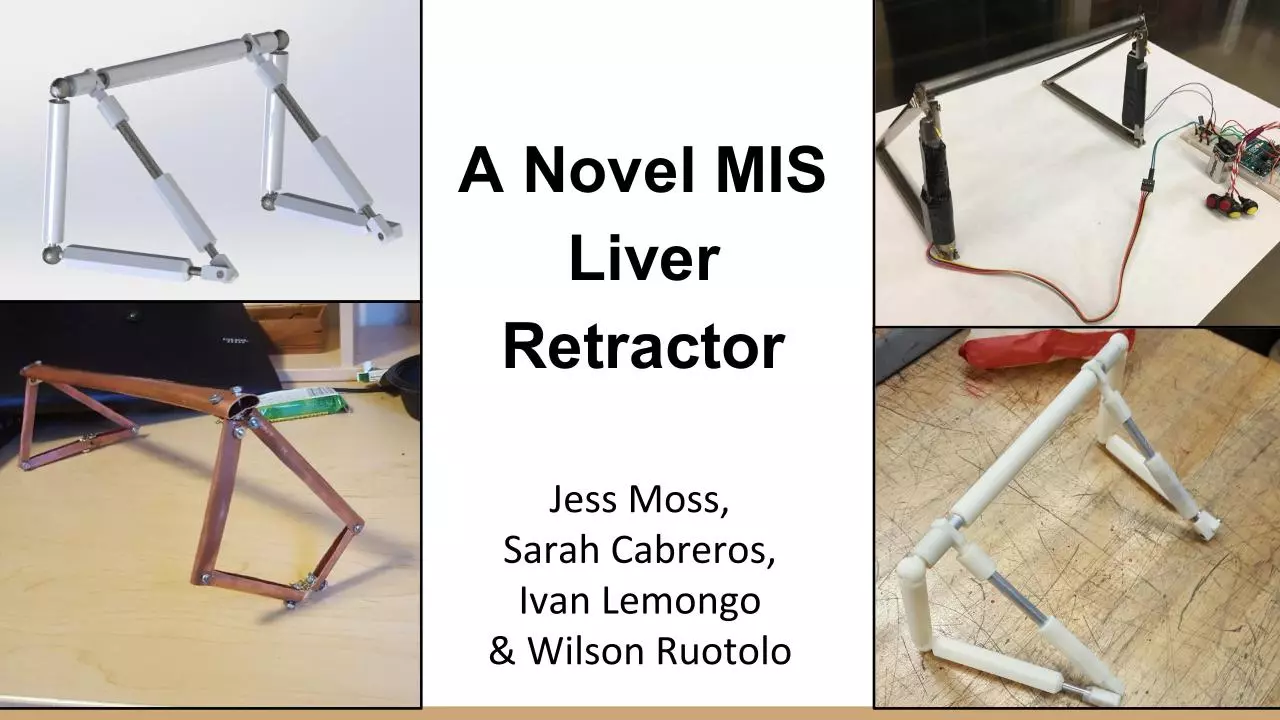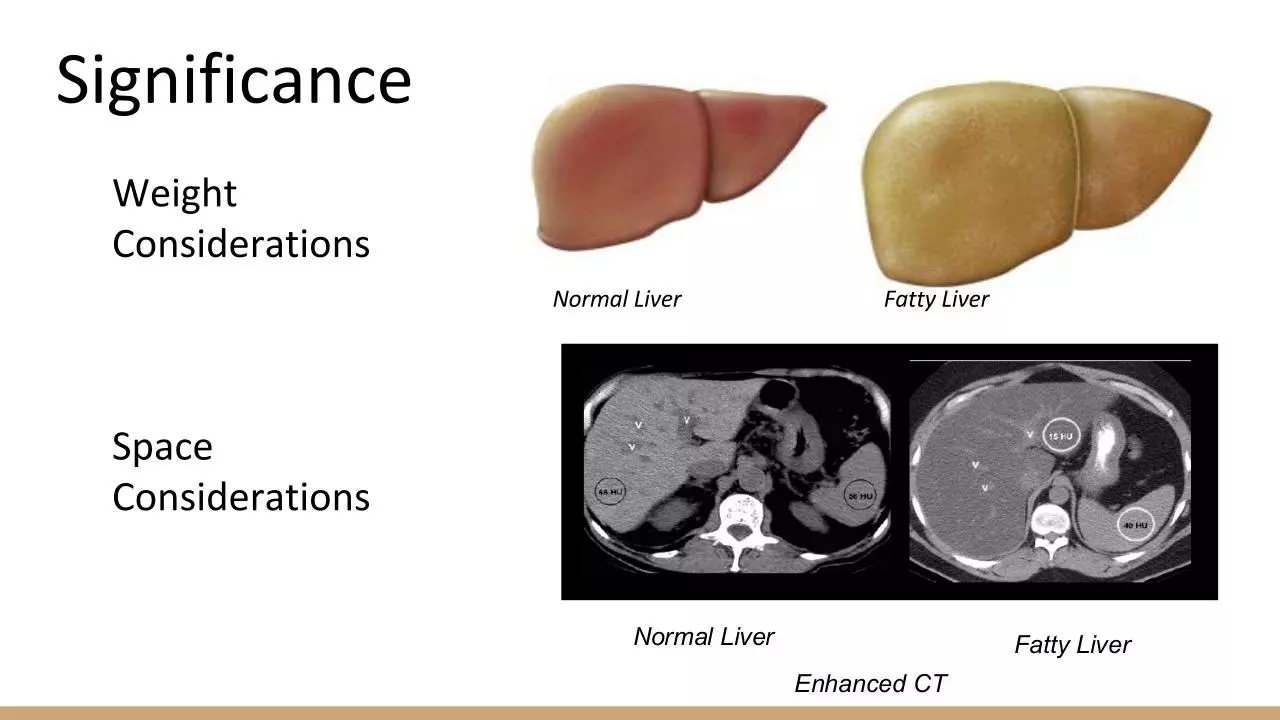ME328 Final Presentation (PDF)
File information
This PDF 1.4 document has been generated by Google / , and has been sent on pdf-archive.com on 18/10/2018 at 07:20, from IP address 69.27.x.x.
The current document download page has been viewed 602 times.
File size: 3.57 MB (20 pages).
Privacy: public file





File preview
A Novel MIS
Liver
Retractor
Suturing Technique
Umbilical Tape
Endograb
Normal Liver
Fatty Liver
Enhanced CT
Specific Aim # 1: Design a liver retraction
device that is both robust and MIS
compatible.
Hypothesis 1.3: A folding pattern with necessary joints will allow for insertion and setup of
a pre-assembled bracing structure and can be completed by a trained surgeon in
comparable or faster time than the current art of liver retraction technology.
Task 1.1: Design a bracing structure that distributes force across the peritoneum
and supports the liver at least 10 cm above the hiatus.
Initial Idea
Sketches
First
Prototype
Refined
Design
Second
Prototype
Task 1.2: Create a liver retracting device capable of fitting through a
standard 10mm MIS port.
Task 1.2: Continued
Initial Folding Mechanism
Prototype
3D Printed Prototype in
Insertion Configuration
CAD Model Of Device in
Insertion Configuration
Specific Aim # 2: Integrate post-insertion
control of the device so as to ensure the
surgeon can fine tune the shape of their
desired work space.
Hypothesis 2.2: Visual feedback from traditional MIS cameras is sufficient for the
surgeon to accurately finalize the device configuration using the control scheme
designed in Task 2.1.
Task 2.1: Implement remote actuation of the supporting legs of the
structure designed.
Prototype with gelatin tissue phantom
Extension and retraction of
linear actuators
Micro linear actuator
Specific Aim 3: Distribute tool-tissue contact area of
the device to reduce stress concentrations in
surrounding tissue.
Hypothesis 3.2: The device designed will sufficiently distribute force so as to not perforate
or otherwise damage the load bearing tissues of the peritoneum even under the increased
load necessary to support a fatty liver.
Task 3.1: Analyze and adapt primary loading
areas of the device so as to eliminate sharp
edges and maximize surface area of contact
within the limits imposed by the MIS insertion
procedure.
Surgical Trials
Surgical Trials
1.
Standardized procedure on
porcine cadavers using our
device
Surgical Trials
1.
Standardized procedure on
porcine cadavers using our
device
2.
Timed components of the
procedure with a focus on
insertion and setup
Hypothesis 1.3: The device can be assembled quickly
Surgical Trials
1.
Standardized procedure on
porcine cadavers using our
device
2.
Timed components of the
procedure with a focus on
insertion and setup
3.
Video review to assess
level of hiatal exposure
Hypothesis 2.2: Traditional MIS cameras are sufficient
feedback for positioning of the device
Palanivelu, Praveenraj, et al. "Review of various liver retraction techniques in single
incision laparoscopic surgery for the exposure of hiatus." Journal of minimal access
surgery 11.3 (2015): 198.
Surgical Trials
1.
Standardized procedure on
porcine cadavers using our
device
2.
Timed components of the
procedure with a focus on
insertion and setup
3.
Video review to assess
level of hiatal exposure
4.
Open cavity postoperative
inspection to quantify total
tissue damage
Hypothesis 3.2: The device will diminish stress
concentrations
Download ME328 Final Presentation
ME328 Final Presentation.pdf (PDF, 3.57 MB)
Download PDF
Share this file on social networks
Link to this page
Permanent link
Use the permanent link to the download page to share your document on Facebook, Twitter, LinkedIn, or directly with a contact by e-Mail, Messenger, Whatsapp, Line..
Short link
Use the short link to share your document on Twitter or by text message (SMS)
HTML Code
Copy the following HTML code to share your document on a Website or Blog
QR Code to this page

This file has been shared publicly by a user of PDF Archive.
Document ID: 0001899548.